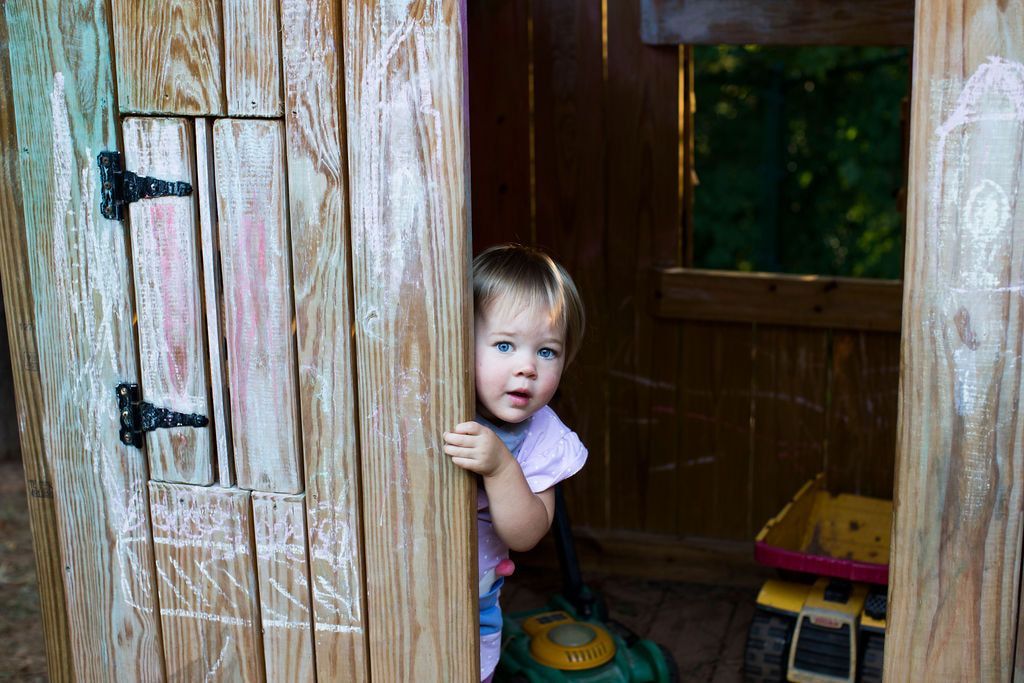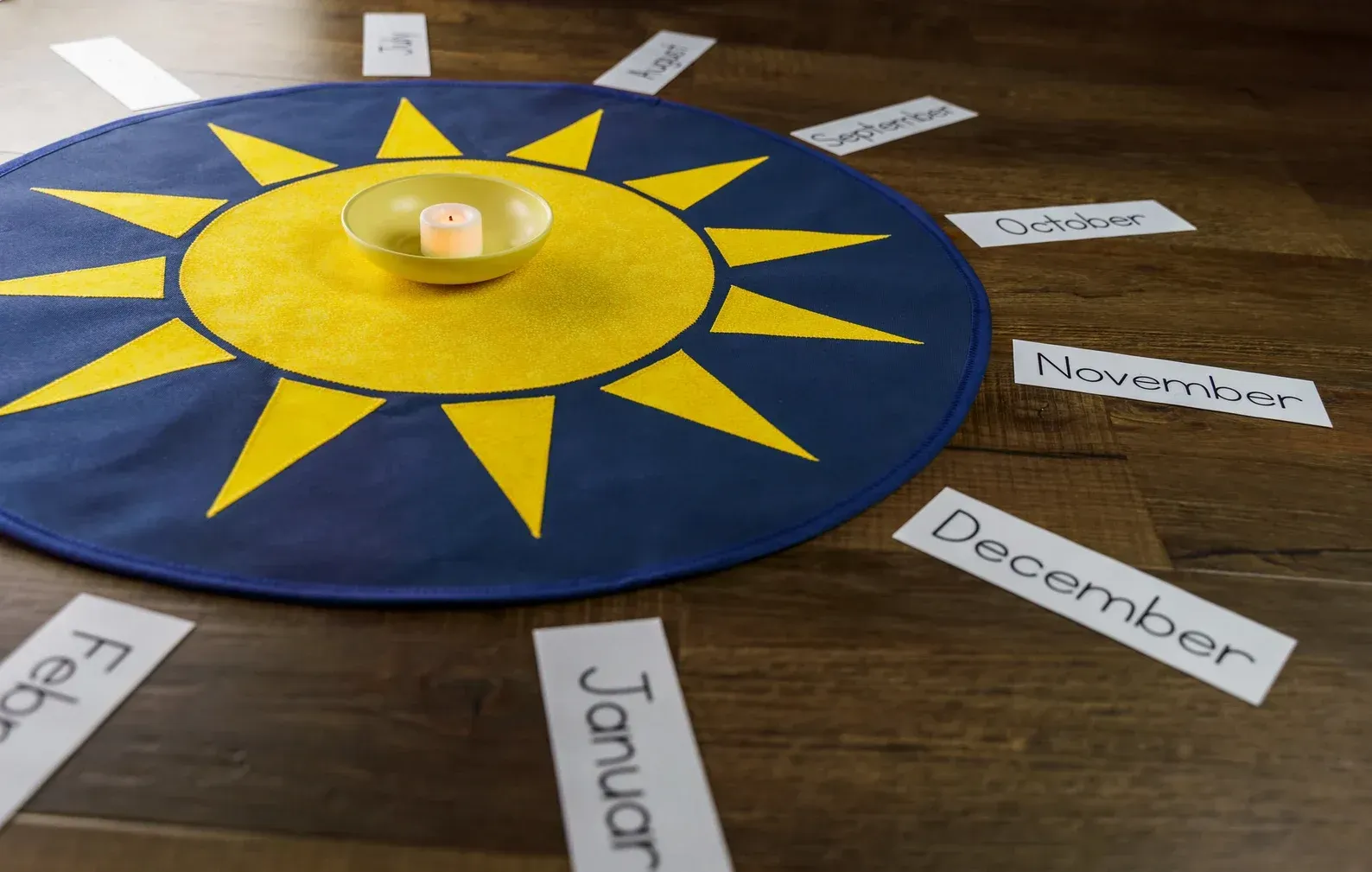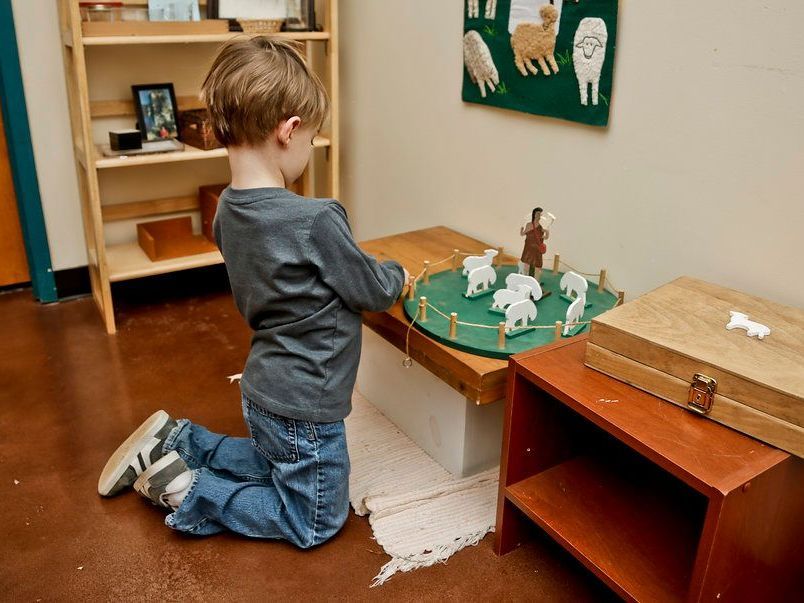Blog

Starting school is one of the biggest milestones in a child’s early life. For children entering Montessori school, this transition can come as early as the second year of life. The first few weeks in a new school or class are an exciting time of growth and adjustment that can also come with some big feelings (for parents and kids alike!). Having clear expectations and open conversation with your child can help the transition go smoothly for everyone. Here are some key things we recommend keeping in mind as your child starts school: Expect Big Feelings: Transitions are tricky for little ones, and getting out of the car and into the school building can be a big step for your child. Even the most confident kiddos may feel nervous when starting school. Tears, clinging to a parent, or reluctance to say goodbye can be tough to see, but are completely normal in the early weeks of the transition. As the parent, remember that your calmness helps reassure your child that all is well and they will be okay! Talk positively about school and share excitement about your child’s new experiences. Take Time to Learn New Routines: A consistent morning and drop-off routine can help your child adapt more quickly to going to school. Keep your mornings calm and predictable to avoid a rushed drop-off. When you get to school, think about incorporating a special routine you do with your child right before they get out of the car. Then make the drop off short and sweet! Even something as simple as a special phrase or prayer you say before your child exits the car can help them begin to know what to expect. Also, remember that at the beginning of the school year, children are learning new rhythms in the classroom as well. Where to put their things, how to follow the class schedule, and how to choose and complete their work are all big things for your little one. Be patient as your child adjusts. Keep an Open Mind about “Learning”: Remember that in Montessori school, much of the child’s daily work does not look like what you may expect from typical academics. Especially for the toddler class, children spend the majority of their time learning practical life skills, building social skills, practicing courtesy and manners, and engaging in their own self-care. You may not notice dramatic changes in your child’s knowledge or behavior in the first month. Things like putting shoes on and off, cleaning up after snack time, and preparing food are small steps that set the foundation for future learning. Give Social Connections Time to Grow: Some children may connect with their teacher and friends right away, while others may take some more time to join in and build connections. This is completely normal. As children become comfortable with their school community, they will build a sense of security, belonging, and purpose. Give your child time to find their place in the community, and soon they will thrive. Encouraging Independence Gives Children Confidence: Help your child take agency in their own school journey. Encourage them to choose their own clothes and assist them in learning to dress themselves. Include your child in packing their lunch or preparing their school items the night before. Remember why you chose Cross of Life Montessori: Adjustment takes time. But with patience, consistency, and support, the first few weeks at school can build the foundation for years of joy and growth ahead. Children pick up on your emotions and feelings. Even if you are feeling a little bit nervous (which is completely normal!) try to show your child that you are confident in the decision to send them to our school and say goodbye with a smile. They are in wonderful hands! Our teachers have decades of training and practice in helping children adapt to their new environment and are delighted to help your little one find their place. At Cross of Life Montessori, we’re here to walk alongside your family as you adjust to new rhythms, routines, and ways of learning. We’re so excited to participate in your child’s growth and learning! The first few weeks at a new school are a period of adjustment and trust-building as children settle into their new Montessori community. By knowing what to expect and supporting your child with calm routines and encouragement, you can help make the transition to school a positive experience for the whole family. We can’t wait to see your child in class!

It’s no secret that little ones often have intensely big feelings. We’ve all witnessed an emotional outburst common during the “terrible twos” and “threenager” years. Watching your toddler melt into a puddle of sobs can be incredibly frustrating if you don’t understand the root cause. Luckily, there are some clear explanations for what is happening in your child’s brain and concrete strategies you can use to help children learn to regulate their emotions. While they may seem dramatic, young children’s emotional storms are not a sign of bad behavior. These outbursts express an overwhelmed nervous system and a plea for connection. They are not giving you a hard time, they are having a hard time. Children are not born with the ability to recognize, express, manage, and respond to their emotions. It is entirely learned. As toddlers begin to experience and express bigger feelings, they still lack the impulse control to manage these emotions. Through a strategy called co-regulation , you can help your child both find their calm in the moment and develop their emotional regulation skills for future success. Co-regulation is when a calm and responsive adult provides the necessary emotional support to help a dysregulated child work through their big feelings. While children are in the first plane of development (ages 0-6), they are constructing their emotional world but can’t yet handle big feelings on their own. Through co-regulation, adults can offer a compassionate presence to help children understand their emotions and feel safe when overwhelming feelings threaten to take over. Co-regulation teaches children the skills for emotional regulation through presence and modeling by using a soothing voice, gentle touch, and eye contact to show a child that they are not alone. The way we respond to children’s emotional needs creates a framework for learning to regulate their feelings. Your calm and regulated emotions are the determining factor for your child’s healthy emotional development . Children borrow their sense of calm and safety from the adults around them. Keeping your cool can feel much easier said than done during a wild toddler tantrum. But to teach children to regulate their emotions, we must first be able to regulate our own . Children are not responsible for the emotions of adults. While children’s behavior may feel triggering, it is the adult's responsibility to regulate their feelings about and reactions to the situation . Children need reliably calm caregivers who can help guide them through their feelings. The goal here is to reinforce your boundaries while supporting your child through the big emotions. Being emotionally supportive differs from “giving in” to a child’s tantrum. You set the rules, which do not change based on the child’s emotional reactions. In fact, changing the boundary or rule in response to your child’s big feelings may serve to increase their tantrums while decreasing their ability to regulate emotions. Tantrums are a chance to help your child regulate and connect with them. When a child is in a large emotional outburst, they are not cognitively capable of understanding reason and logic. Instead, they need a reassuring adult presence to teach them how to work through their big emotions and get to the root of the problem. Only after the emotions pass can a child start to understand explanations and corrections. This does not mean you need to permit your child to behave in unacceptable ways. It does mean that you need to help them calm their big emotions BEFORE you can move to correction and redirection based on your boundaries. The reason co-regulation is successful is largely due to mirror neurons , which are special brain cells that activate not only when we do something, but also when we see someone else do it. Think about the way a baby smiles back when you smile at them. This is an example of mirror neurons at work. Similarly, if an upset child sees an adult remaining calm in the face of a challenging situation, it activates their sense of calm. Thanks to mirror neurons, children can literally borrow their calm, both physically and emotionally, from adults. Through co-regulation, a calm adult can offer emotional support through kind words, a gentle tone of voice, and peaceful touch. Once the child begins to settle down, an adult can help the child name and explain their feelings and model healthy ways to manage the big emotions. Through many small, supportive moments of a calm adult in the face of big feelings, your child’s brain begins to self-regulate to manage their own emotions. When you meet a child’s emotional outbursts with calm, steady compassion, you provide the training necessary to rewire their brain to regulate the flood of emotions and find balance. Practical Tips for Practicing Co-Regulation: Find and Share Your Calm– Effective co-regulation is only possible if you regulate your emotions first. Your calm is the determining factor for success. But keep in mind that you aren’t failing if you regularly feel frustrated by your child’s outbursts! Take a second to settle your own nervous system before trying to help your child regulate. Try strategies like box breathing (inhale 4 seconds, hold 4 seconds, exhale 4 seconds), loosening your muscles, or repeating a calming phrase to yourself can help you center yourself. Get on Their Level- Physically lower yourself to your child’s eye level. By meeting them where they are, both physically and emotionally, you can help calm their nervous system. You can even give a simple verbal reassurance such as “I’m here with you”. Name the Feeling —Teach your children about the different emotions and how they feel by identifying what you think they are going through. For example, you could say “You’re feeling sad right now about leaving the park”, “You’re really frustrated that you can’t get that tool to work”, or “It’s okay to feel mad”. It’s important to name the feeling without judging it, using simple language that helps them understand how they feel. Connecting BEFORE Correcting– Meet the child at their emotional place, and empathetically acknowledge their feelings before offering any necessary correction for their behavior. They need to be out of the emotional storm before they can truly understand the correction. Try lovingly reinforcing your boundary while still offering connection, by saying something like “I can see that you’re really upset, but I won’t let you throw toys at me. I’ll sit here with you until you feel better”. Focus on Nonverbal Soothing– Offer open body language, soft tone of voice, eye contact, and gentle touch to help settle the child’s nervous system. Model Calming Strategies– When you’re feeling upset, use it as an opportunity to model your own process of calming yourself down when you feel big emotions or triggers. For example, “I’m feeling so frustrated right now, but I’m going to take some deep breaths to help calm my body down before deciding what to do.”

When you ask a young child how old they are, they will likely hold up fingers like a badge of honor while proudly announcing their age. Birthdays and ages are one of the first tangible markers of time that children understand. They anticipate their birthday for months, excited about advancing to the next age. The rituals and traditions around birthday celebrations become beloved memories as children grow. Their love of birthdays also reflects children’s natural desire to understand themselves and their place in the world as they grow. Montessori supports this desire in children by offering a unique birthday celebration that centers the child’s individual growth within the earth’s cycles. Known as a “ Montessori Birthday Walk ” or “ Walk Around the Sun ” ceremony, the Montessori birthday tradition honors each year of a child’s life and development as they age. In the Montessori classroom, a depiction of the sun is placed in the center of the room and a small candle or light is placed on top. The classroom of children all sit around the sun in a circle while the birthday child stands and holds a globe or representation of the Earth. Just like the Earth completes one orbit around the sun each year, the birthday child completes one “orbit” around the circle for each year of their life. After each time around the sun, the child, a parent, or caregiver shares memories including photos and stories about that year of the child’s life. For example, after the first “orbit” a parent may share baby photos and stories about the child learning to crawl. The child completes as many orbits as they are years old. This special Montessori birthday tradition allows children to tangibly experience the journey of aging while self-reflecting and sharing beloved memories with friends and teachers. The celebration centers the child while connecting their personal history and growth with the world around them. Next time you celebrate your child’s birthday, you can try a version of the Walk Around the Sun at home! Print out pictures of them at each age and prepare to share some of your favorite memories. You can also ask your child to share their own favorite memories from each year. This can be a wonderful opportunity to help your child integrate their memories while reflecting on the joy of early childhood. photo credit: BirchStreetGoods Etsy

“A child’s work is based on doing things for their own sake. There is an end towards which his work is taking him: through his work, he is building the man he will become. But the child doesn’t know this; he only knows that he takes delight in doing certain things. This is his work” -Dr. Maria Montessori





